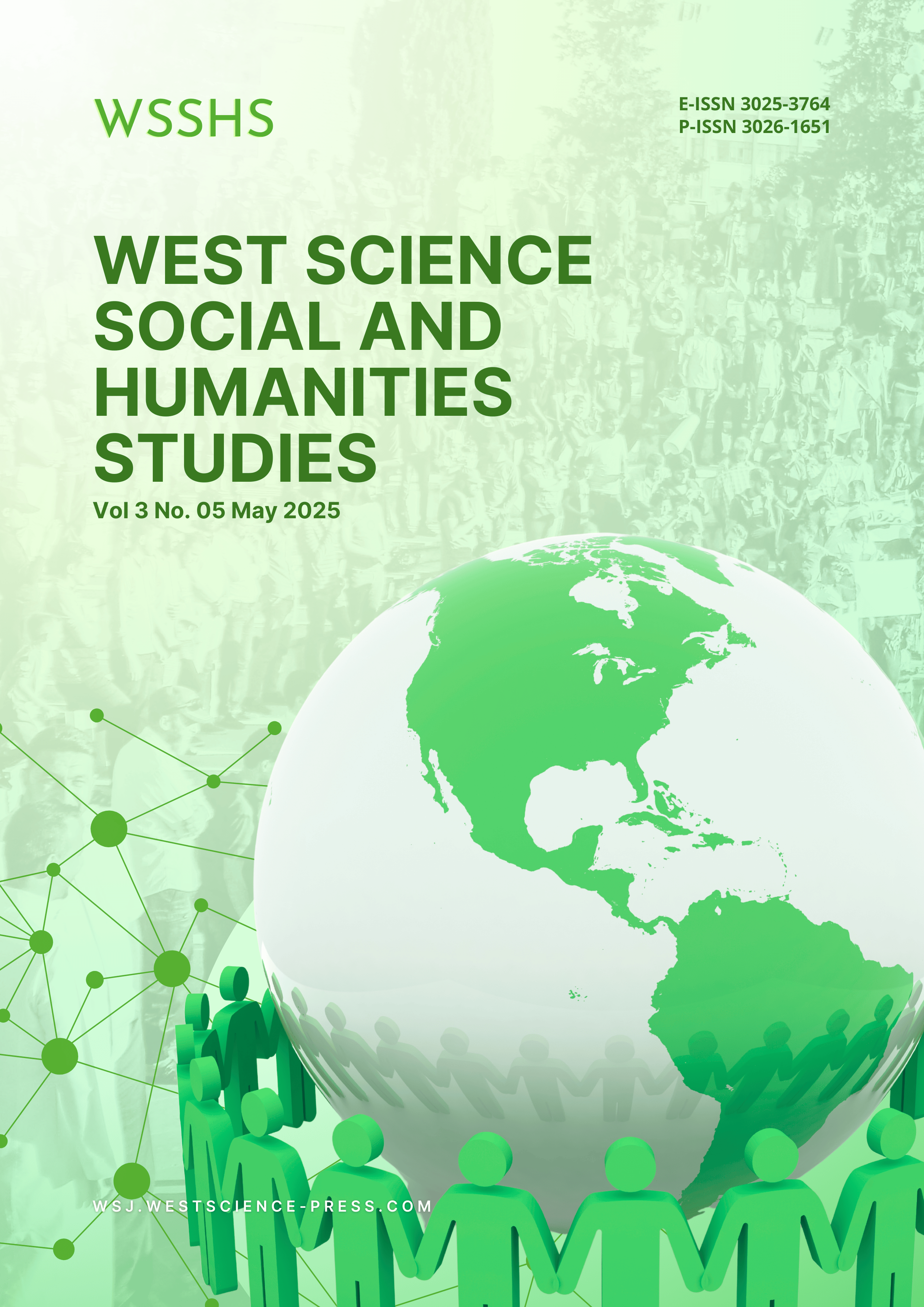Visualizing the Growth of Green Retailing: A Bibliometric Mapping of Sustainable Practices in Retail Marketing
DOI:
https://doi.org/10.58812/wsshs.v3i05.1916Keywords:
Green Retailing, Sustainable Practice, Retail Marketing, Bibliometric Analysis, VOSviewerAbstract
This study presents a bibliometric analysis of the academic literature on green retailing and sustainable practices in retail marketing, using data retrieved from the Scopus database (2000–2024). Employing VOSviewer for co-authorship, citation, and keyword co-occurrence analysis, the study identifies core research themes, influential contributors, and evolving trends in the field. The results reveal that “green retailing,” “green marketing,” and “cost optimization” are central to the scholarly discourse, reflecting the growing strategic importance of sustainability in retail operations. The analysis also uncovers a temporal shift from foundational environmental themes to more actionable managerial strategies. India stands out as a hub of international collaboration, and author network analysis highlights prominent research clusters around figures such as Sarkis J. and Lai K.H. While the literature has matured in linking green practices with business outcomes, emerging gaps include social dimensions of sustainability and digital transformation in retail. The study concludes with recommendations for future research directions that emphasize interdisciplinary inquiry and practical application in advancing sustainable retail marketing.
References
[1] K. Lai, T. C. E. Cheng, and A. K. Y. Tang, “Green retailing: factors for success,” Calif. Manage. Rev., vol. 52, no. 2, pp. 6–31, 2010.
[2] J. Heydari, P. Bineshpour, G. Walther, and M. A. Ülkü, “Reconciling conflict of interests in a green retailing channel with green sales effort,” J. Retail. Consum. Serv., vol. 64, p. 102752, 2022.
[3] C. Fuentes, Green retailing: A socio-material analysis. Lund University, 2011.
[4] R. Sinha and R. Chaudhuri, “Green retailing: environmental strategies of organized retailers and competitive advantage,” Int. Postgrad. Bus. J., vol. 6, no. 1, pp. 115–119, 2014.
[5] P. Kumar, “Effects of in-store information quality and store credibility on consumer engagement in green retailing,” J. Retail. Consum. Serv., vol. 71, p. 103195, 2023.
[6] M. Aria and C. Cuccurullo, “bibliometrix: An R-tool for comprehensive science mapping analysis,” J. Informetr., vol. 11, no. 4, pp. 959–975, 2017.
[7] R. Sinha, “Green retailing: An exploratory study examining the effects of sustainability on global retail landscape,” in Proceedings of the Conference on Inclusive & Sustainable Growth Role of Industry, Government and Society, 2011.
[8] M. R. Gleim, J. S. Smith, D. Andrews, and J. J. Cronin Jr, “Against the green: A multi-method examination of the barriers to green consumption,” J. Retail., vol. 89, no. 1, pp. 44–61, 2013.
[9] A. Dhir, M. Sadiq, S. Talwar, M. Sakashita, and P. Kaur, “Why do retail consumers buy green apparel? A knowledge-attitude-behaviour-context perspective,” J. Retail. Consum. Serv., vol. 59, p. 102398, 2021.
[10] A. Kumar, G. Prakash, and G. Kumar, “Does environmentally responsible purchase intention matter for consumers? A predictive sustainable model developed through an empirical study,” J. Retail. Consum. Serv., vol. 58, p. 102270, 2021.
[11] S. Pookulangara and A. Shephard, “Slow fashion movement: Understanding consumer perceptions—An exploratory study,” J. Retail. Consum. Serv., vol. 20, no. 2, pp. 200–206, 2013.
[12] E. Ko, Y. K. Hwang, and E. Y. Kim, “Green marketing’functions in building corporate image in the retail setting,” J. Bus. Res., vol. 66, no. 10, pp. 1709–1715, 2013.
[13] N. C. Horner, A. Shehabi, and I. L. Azevedo, “Known unknowns: indirect energy effects of information and communication technology,” Environ. Res. Lett., vol. 11, no. 10, p. 103001, 2016.
[14] C. Mukonza and I. Swarts, “The influence of green marketing strategies on business performance and corporate image in the retail sector,” Bus. Strateg. Environ., vol. 29, no. 3, pp. 838–845, 2020.
[15] F. He, Y. Yan, J. Hao, and J. G. Wu, “Retail investor attention and corporate green innovation: Evidence from China,” Energy Econ., vol. 115, p. 106308, 2022.
[16] A. Paul, M. Pervin, S. K. Roy, N. Maculan, and G.-W. Weber, “A green inventory model with the effect of carbon taxation,” Ann. Oper. Res., vol. 309, no. 1, pp. 233–248, 2022.
[17] A. Adhikari, I. Biswas, and B. Avittathur, “Green retailing: A new paradigm in supply chain management,” in Handbook of research on strategic supply chain management in the retail industry, IGI Global Scientific Publishing, 2016, pp. 290–307.
[18] P. Kumar, “Greening retail: an Indian experience,” Int. J. Retail Distrib. Manag., vol. 42, no. 7, pp. 613–625, 2014.
[19] D. V. P. NGUYEN, “Green Retail: Contemporary Practices, Current Status, and Future Research Directions,” J. Distrib. Sci., vol. 23, no. 2, pp. 23–38, 2025.
[20] D.-C. Dabija and C.-M. Pop, “Green marketing-factor of competitiveness in retailing.,” Environ. Eng. Manag. J., vol. 12, no. 2, 2013.
Downloads
Published
Issue
Section
License
Copyright (c) 2025 Loso Judijanto, Rani Eka Arini, Rival Pahrijal

This work is licensed under a Creative Commons Attribution-ShareAlike 4.0 International License.




















 Instagram
Instagram 